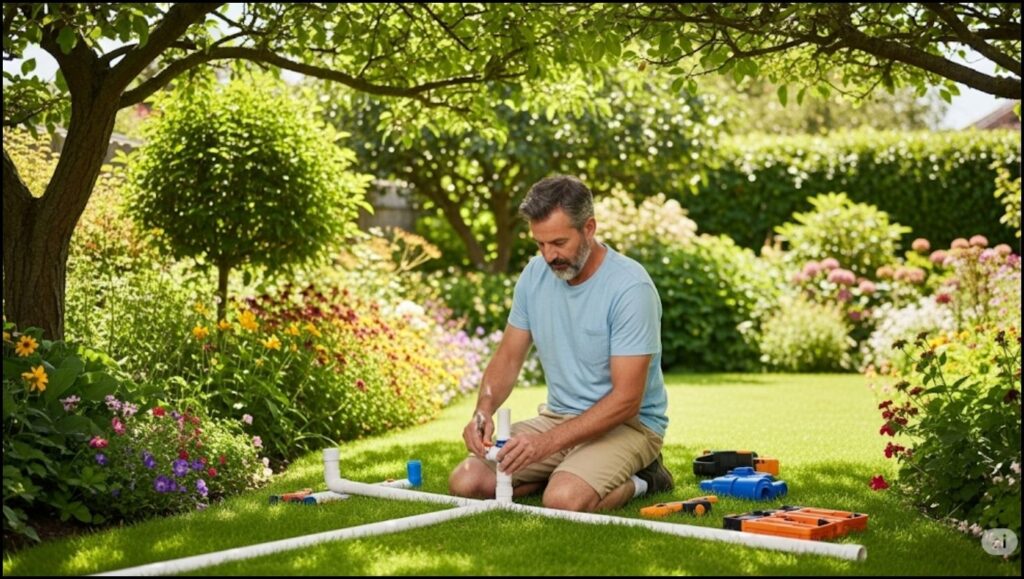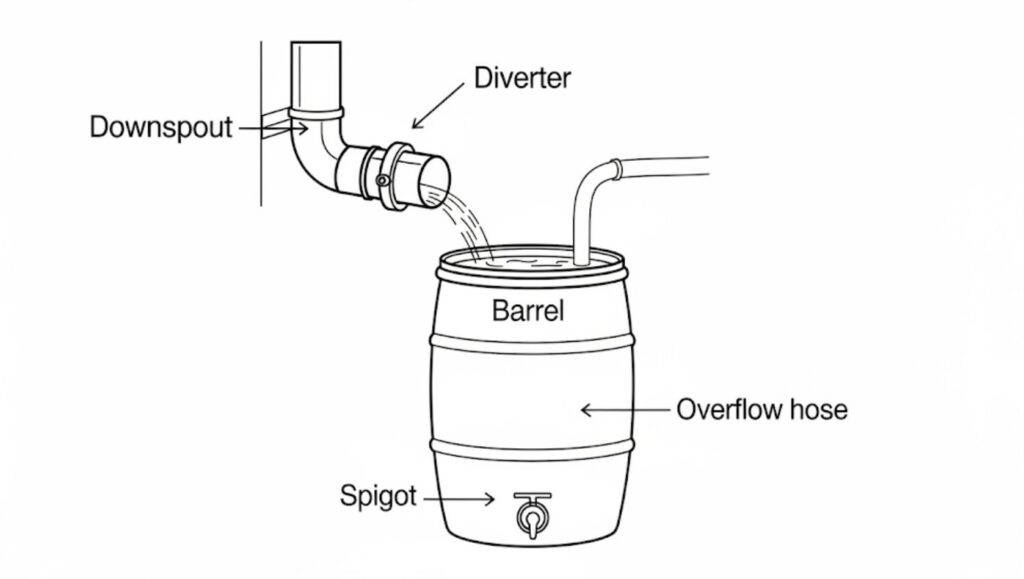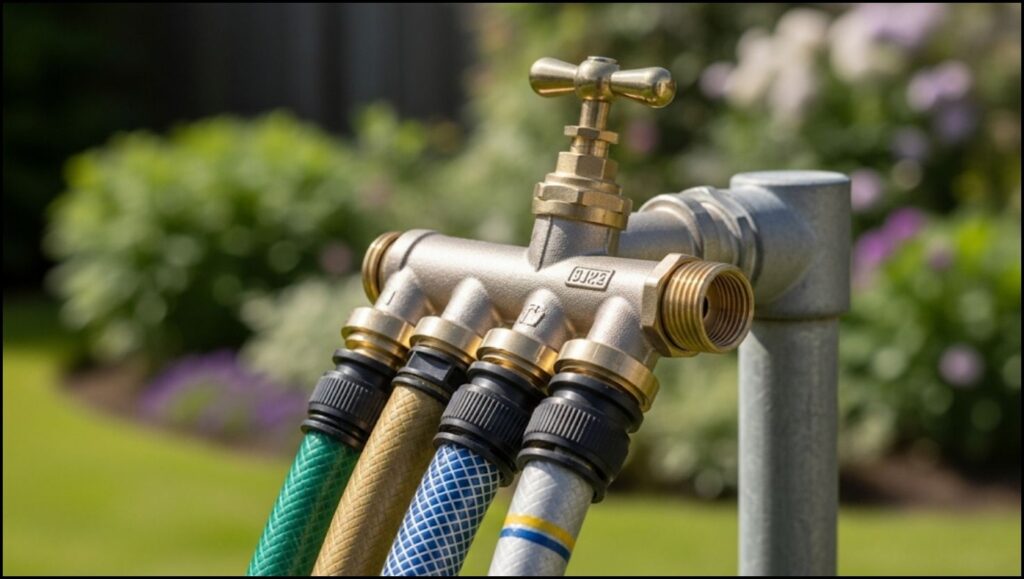As homeowners increasingly seek to reduce water consumption and enhance outdoor living spaces, many are turning to simple DIY garden plumbing projects. These accessible tasks, from installing efficient irrigation to adding convenient faucets, can be completed in a weekend, offering significant benefits for both the environment and household budgets.

Key Project Insights
| Project Type | Primary Benefit | Estimated Time |
| Drip Irrigation System | Reduces water waste by up to 70% | 2-4 hours |
| Rain Barrel Installation | Captures free, non-chlorinated water | 1-2 hours |
| Upgraded Hose Spigot | Improves convenience and prevents leaks | 1 hour |
The Rise of Water-Wise Landscaping
With growing concerns over water scarcity and rising utility costs, homeowners are adopting more strategic approaches to landscape management. Simple plumbing upgrades are a key part of this trend, moving beyond basic lawn care to create more resilient and efficient garden ecosystems. These projects often require minimal specialized skills and can yield immediate returns in water conservation and convenience.
“We’re seeing a significant shift from ‘set-it-and-forget-it’ sprinkler systems to more hands-on, water-conscious solutions,” says Michael Chen, a master plumber and contributor to home improvement journal The Practical Plumber. “Many foundational DIY garden plumbing tasks are far less intimidating than people think and serve as a gateway to greater self-sufficiency in home maintenance.”
1. Install a Drip Irrigation System
Perhaps the most impactful project, a drip irrigation system delivers water directly to the base of plants, minimizing evaporation and runoff. According to the U.S. Environmental Protection Agency (EPA), such systems use 20 to 50 percent less water than conventional pop-up sprinklers.
Kits available at most home improvement stores include a pressure regulator, filter, and tubing that can be configured to suit any garden layout. The process involves connecting the main line to an outdoor faucet and running smaller emitter lines to individual plants.
2. Set Up a Rain Barrel
A rain barrel is a straightforward method for capturing and storing rainwater from rooftops via downspouts. This stored water is naturally soft, free of chlorine and other chemicals found in municipal water, making it ideal for watering container plants and vegetable gardens.
“Installation is simple: place the barrel on a level, elevated surface and cut the downspout to direct water flow into the barrel’s inlet,” explains Dr. Hannah Reid, a horticulture specialist with the Penn State Extension. “A single one-inch rainfall event on a 1,000-square-foot roof can yield over 600 gallons of water, a portion of which can be easily captured.”

3. Replace or Add an Outdoor Faucet
Adding a new outdoor faucet (also known as a hose bib or spigot) or replacing a leaky one can drastically improve convenience and prevent waste. A dripping spigot can waste hundreds of gallons of water per year. For gardens that require long hose runs, installing an additional faucet closer to the work area saves time and effort. While this may require connecting to an existing water line, modern push-to-connect fittings have made the process more accessible for DIYers.
4. Build a Simple Outdoor Sink
An outdoor utility sink provides a convenient station for washing hands, tools, and harvested vegetables without tracking dirt indoors. A basic setup can be created by connecting a simple garden hose to a faucet adapter on the sink and letting the drain empty into a gravel pit or French drain for responsible greywater dispersal. More advanced installations can be tied into the home’s permanent plumbing lines, a task that may be better suited for an experienced plumber.
5. Install a Hose Guide
While not a plumbing project in the strictest sense, installing hose guides prevents damage to delicate plants and flower beds. These simple posts, often with a decorative or rolling top, are staked into the ground at garden corners. They prevent the hose from dragging across plants as it’s pulled, protecting both the flora and the hose itself from abrasion.
6. Set Up a Multi-Outlet Hose Splitter
A simple screw-on hose splitter can turn a single outdoor faucet into a multi-functional water hub. High-quality brass splitters with individual shut-off valves allow you to connect a drip irrigation system, a traditional hose, and an automatic timer simultaneously. This inexpensive upgrade offers immense flexibility without any complex installation.
“The key is to invest in a durable, all-metal splitter,” advises Chen. “Plastic models can degrade in the sun and become a common point of failure and leaks.”

7. Install an In-Line Water Filter
For gardeners using municipal water, an in-line hose filter can remove chlorine, chloramines, and sediments. These chemicals, while safe for human consumption, can be harsh on the beneficial microbes in organic soil. Attaching a simple charcoal filter between the spigot and the hose is a one-minute task that can improve soil health over the long term.
These projects represent a practical entry point into DIY garden plumbing. By tackling these tasks, homeowners can gain confidence in their skills while creating a more sustainable, functional, and enjoyable outdoor space. Experts advise, however, that any project requiring major changes to a home’s main water supply should be undertaken with caution or professional consultation.
7 Clever Flower Bed Designs for Areas with Buried Pipes and Cables
